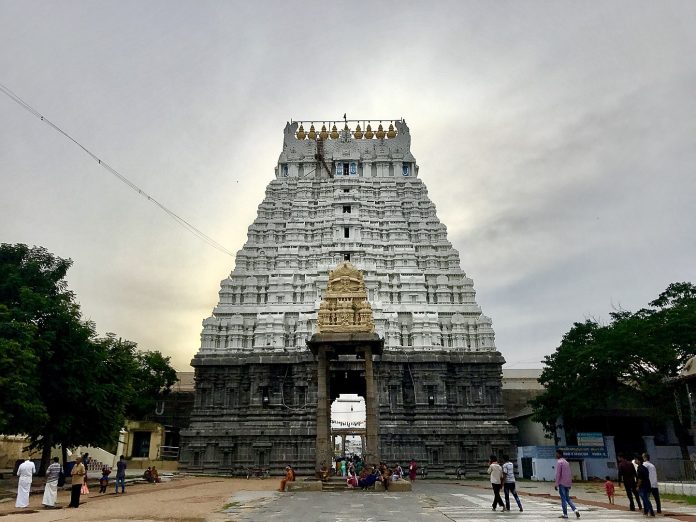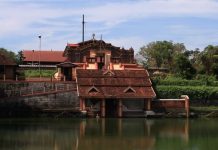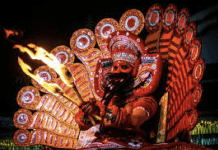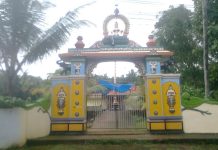
Varadharaja Perumal Temple (also known as Perumal Koil) is dedicated to Lord Vishnu and it is located Kanchipuram city in the Tamil Nadu state. This is one of the most holy places for Vaishnavites. It is one of the Divya Desams, the 108 temples of Vishnu believed to have been visited by the 12 poet saints, or Alwars. The presiding Deity is called Varadaraja Perumal (Lord Vishnu) with his consort Perundevi Thayaar (Goddess Lakshmi).
Legend
As per Hindu legend, Brahma, the Hindu god of creation, separated with his wife Saraswathi over a misunderstanding. He did an Aswameda worship (with a horse) seeking boons from Vishnu. Vishnu was pleased by the devotion and came out from under the earth as a boar and got Saraswathi unite with Brahma. As per another legend, Saraswathi cursed the king of celestial deities, Indra, to become an elephant and roam around the place. He was relived off the curse with the divine power of Vishnu, who appeared as the mount, Hastagiri. Hastagiri indicates a mount/hill in the form of elephant. As per another legend, the disciples of sage Gautama were cursed to become lizards. They resided in the temple and were relieved of the curse by the divine grace of Vishnu. There is a panel in the temple where the two lizards are depicted in the roof of the temple.

History
Varadharaja Perumal Temple was built in 1053, during the reign of the Chola Kings. It was later expanded by the Chola Kings, King Kulottunga Chola I and King Vikrama. The complex had a wall and the gopuram constructed in the 14th century. In 1688, the main idol was shipped to Udayarpalayam which is now a part of Tiruchirapalli after the Mughals attacked the region. After the situation was under control, they asked for the Idol to be sent back, however, after seeing reservations to do so, a local preceptor had to be involved to get the idol back to the Varadharaja Perumal Temple.
Architecture
The temple covers an area of 23 acres and has 32 shrines, 29 vimanams, 389 pillared halls and sacred tanks. The temple architecture shows the ancient architectural skills of Vishwakarma Sthapathis. The structures contain several inscriptions denoting the equal distribution of land, gifts and offerings made to the deity over the period since it was built. The temple complex has seven precincts. The main shrine has a seven-tiered rajagopuram height of 130 feet tall. The wooden image of Varadarajaswamy made of Atthi or the fig tree and preserved under water in a secret chamber. It is brought out for worship for 48 days, once every 40 years.
Some features that attract tourists in large numbers are the stone chain that was sculpted in one single stone and the carvings of lizards. These lizards are covered in gold. The sanctum also has a Vimana of Varadaraja Swami. The wooden idol of the deity is 40 feet tall while the main idol is 10 foot tall and made of granite. The complex also has a maha mandap with 100 pillars. All of these pillars have legends of the Ramayana and Mahabharata sculpted on them. The structures also have mural paintings on the walls and the ceilings.

Temple timings
The temple is open from 6.00 a.m. to 11.00 a.m. and from 4.00 p.m. to 8.00 p.m.
Festival
The temple celebrate some festival each month in which famous festivals are
- 10 days Vaikasi Brahmmotsavam during (May-June) beginning on the Poornima-Vishaka star day
- 10 days Navarathri during the month of Puratasi (Sept-Oct).
- Vaikunda Ekadasi is observed in December-January
How to Reach
By Air:
The nearest Airport Chennai International Airport is about 70 KMs away. Private cabs or taxi is available to reach the temple.
By Rail:
Kanchipuram Railway Station is located about 3 KM away from the temple.
By Bus:
Kanchipuram is well connected to the others city of the south India. Private cabs or taxi is available to reach the temple.























































